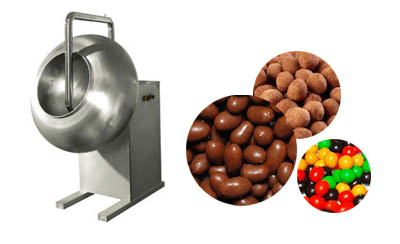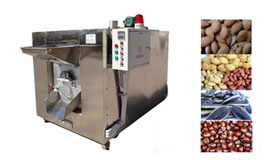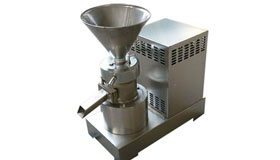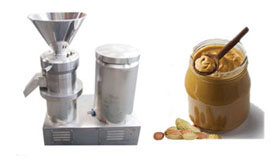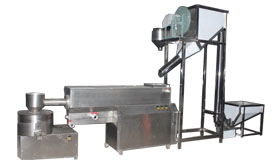Peanut production spreads throughout the world, mainly in Asia, Africa, North America and South America, among which Asia accounts for over 56% of the world area. Since the modern times, the world peanut production has developed steadily, the area, overall production and unit-yield level have increased. China is a peanut production country in the world. In the 19th century, peanut planting area in China had reached 4.53 million hm2, ranking second in the world. Overall production of peanut was 11.568 million t, which was in the first place of the world. At present, the area of peanut in China accounts for about 20% of the world total area, peanut output accounts for about 40% of the world and the per unit yield is almost double of the world level. Peanut production areas are widespread in China, almost all provinces and regions are growing peanuts except Tibet, Qinghai, Ningxia, Hong Kong, etc. It is mainly concentrated in the North China Plain, the coast of bohai gulf, south China coastal areas and the Sichuan Basin, etc. Mainly in seven provinces, including Shandong, Henan, Hebei, Guangdong, Sichuan, Jiangsu and Anhui. The peanut planting area accounts for 72% and total output accounts for 79% of the country.
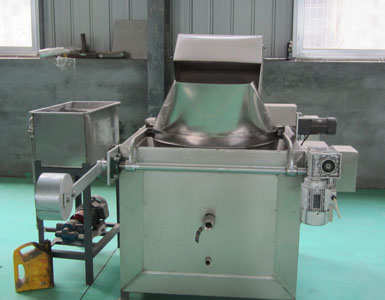
Peanut oil processing
Peanut oil is of good quality, rich nutrition and fragrance. Since peanut oil is the cooking oil loved by people, it has always been the primary production of peanut processing. At present, the methods of peanut oil production include the traditional pressing method and prepress extraction. Pressing method is also known as mechanical method. It uses peanut oil press to get the peanut oil squeezed out. Extraction method makes use of the property of organic solvent such as n-hexane that can "dissolve" oil to soak or spray the flake or pre-pressed cake to get the peanut oil extracted.
Salty peanut
Salty peanut is also called spiced salt peanut. Salty peanut can be produced by roasting or frying. Either way, high quality peanut kernels should be used. The basic production process of salty peanut: peanut kernel- skin removing - color sorting - oil extracting (or roasting) - cooling - coating - adding salt and antioxidants - sealing and packaging - finished product. Salty peanut has shallow color and unique fragrance. Its salt content is 1.25%, excluding microbes or flavor of sour oil. The shelf life can be up to six months. In recent years, in order to meet the market demand for low adipose food, the United States developed the part-skim salty peanut. Its manufacturing method is to remove some fat of the whole peanut kernels with mechanical pressure first. Oil content of the low fat salty peanut is lower, and therefore the heating value is also lower with extended shelf life and soft taste.
The new type of peanut butter
The current peanut butter is usually made from whole milk peanut with high oil content. Therefore, reduce the oil content in peanut butter and produce the new peanut butter have become the development trend. The new peanut butter starts with the changing of formula of raw material to improve the protein content accordingly. There is no significant difference in the appearance of new peanut butter and traditional peanut butter. The main difference in production process and the current process is that some skim peanuts are used. However, there is significant difference in nutrients and nutritional value of these two kinds of peanut butter. Oil content of ordinary peanut butter is about 47%, while the new peanut butter is only 20% ~ 35%. The protein content of new peanut butter increased by 15% and the carbohydrate also increased; the difference in moisture, ash content and fiber is not too large. As a result, the calorific value is correspondingly lower.
Peanut butter machine is becoming more and more popula





